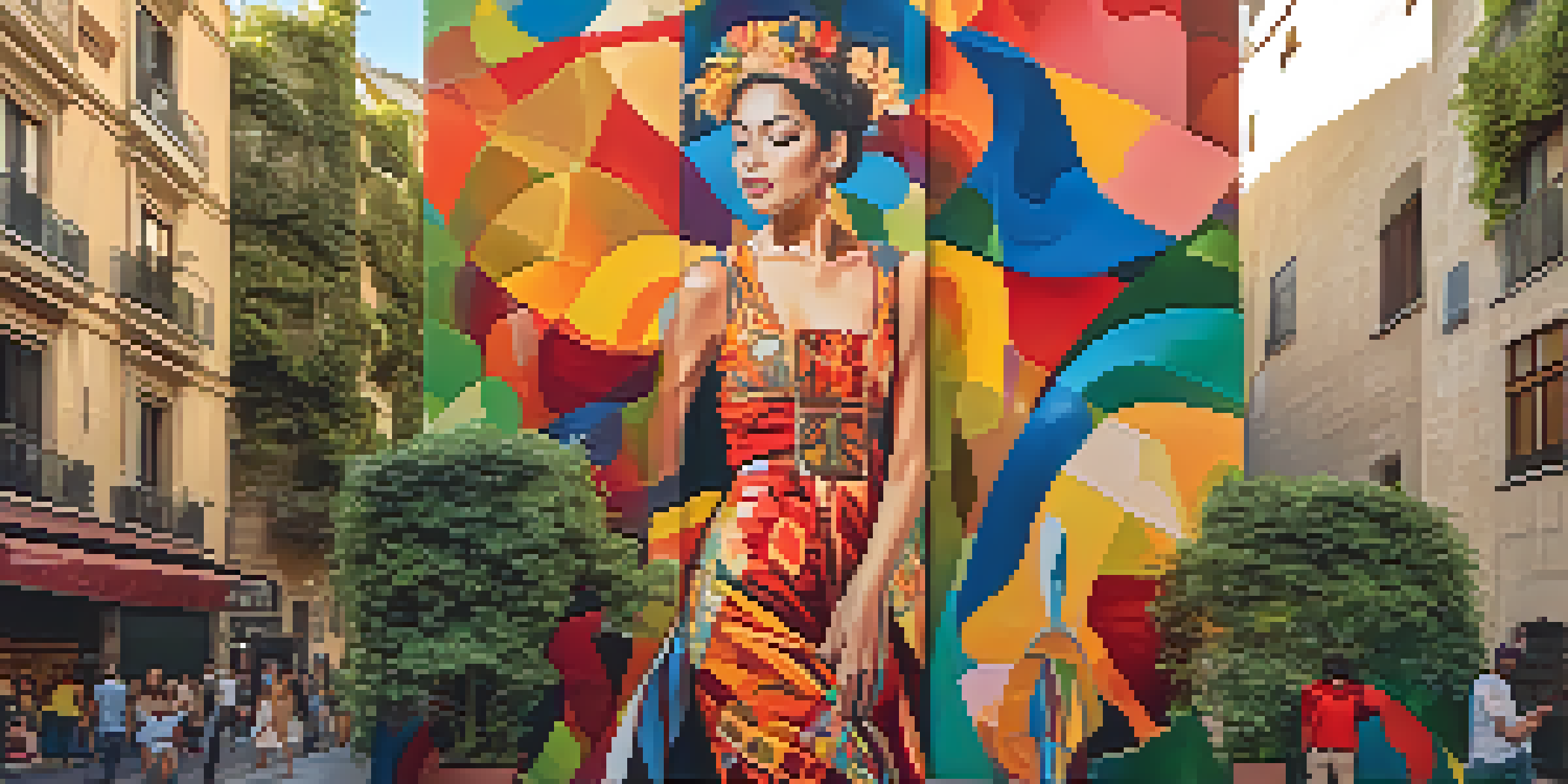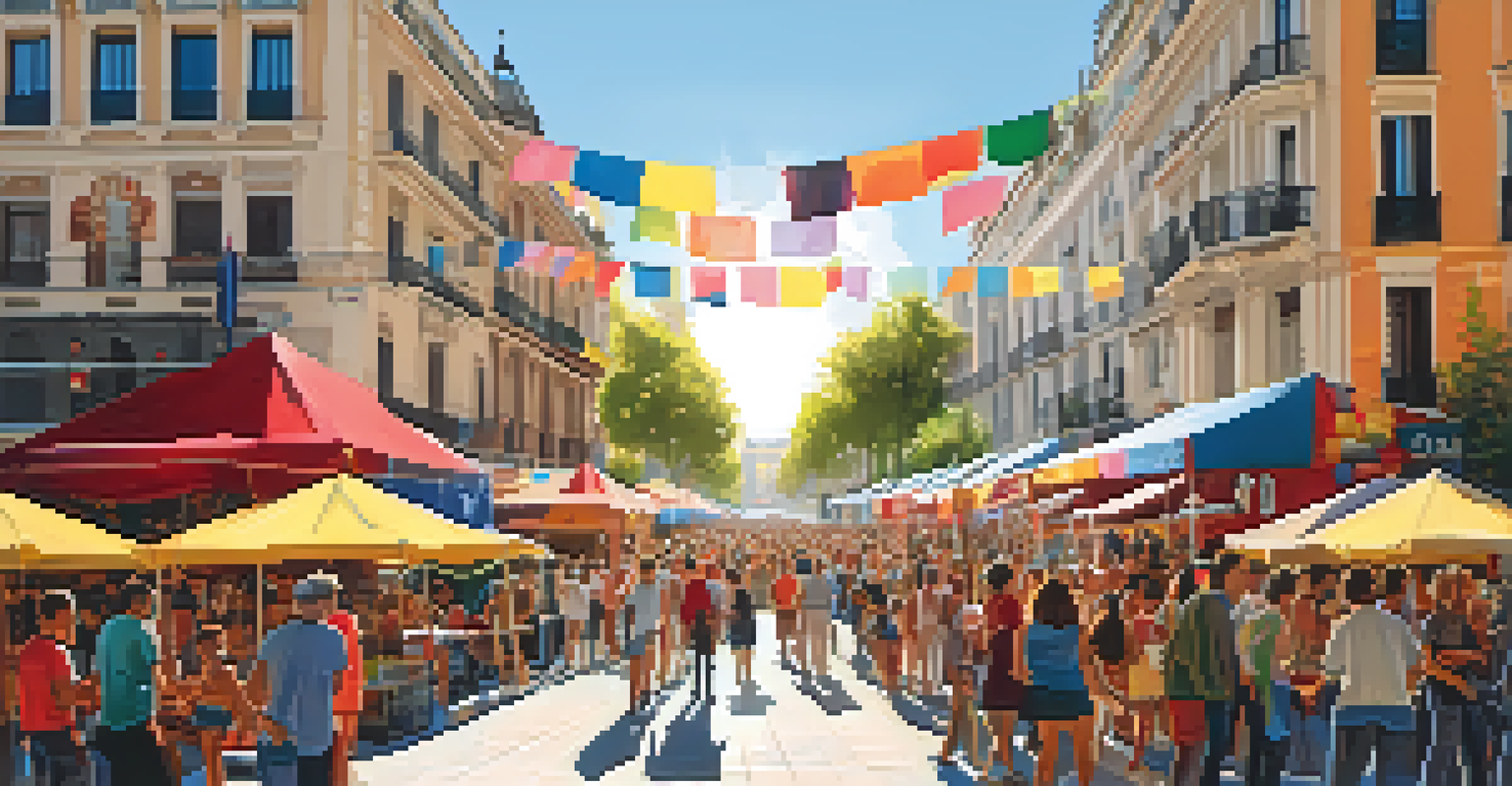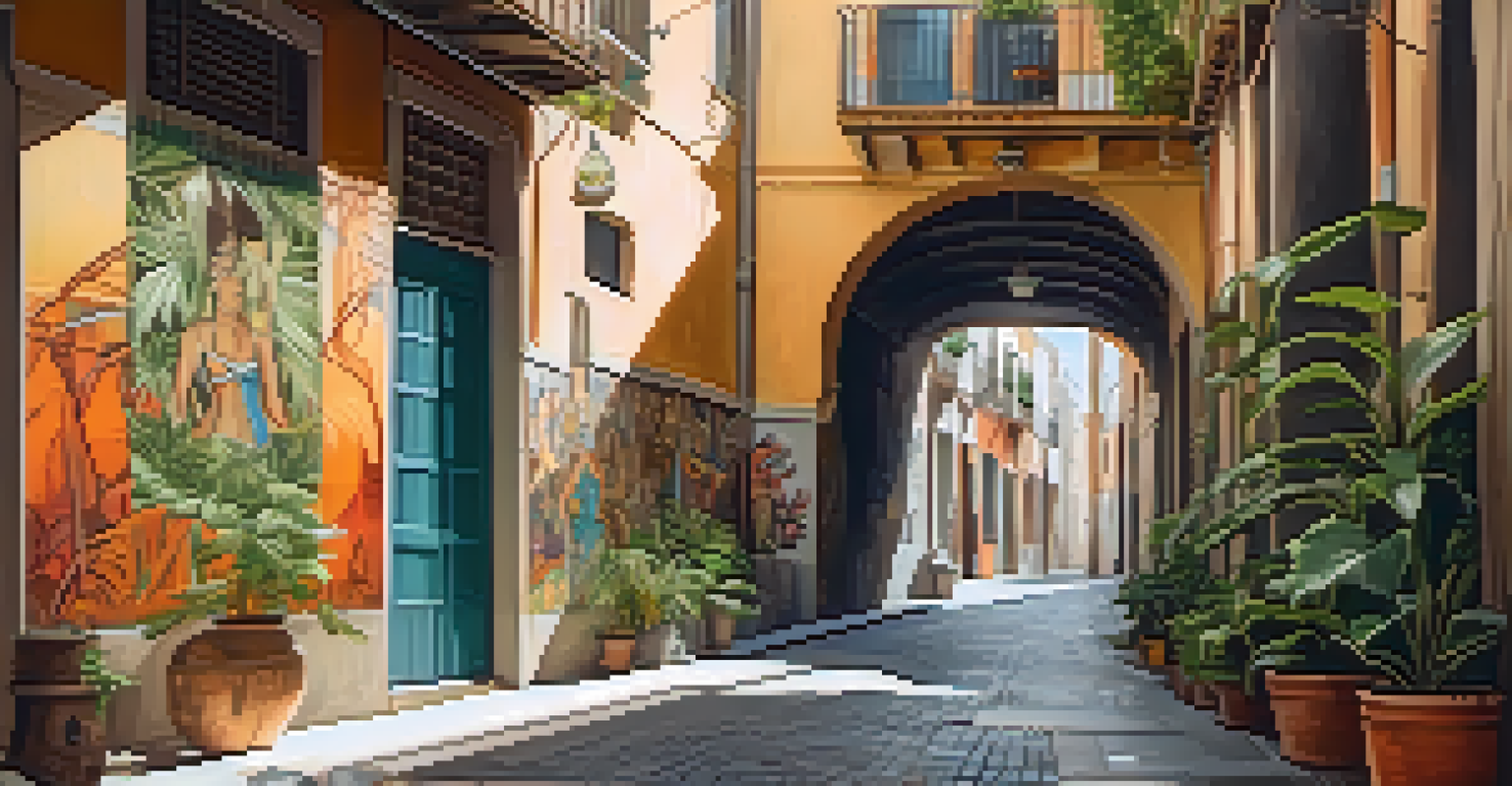The Impact of Street Art on Tourism in Spain

The Rise of Street Art in Spain's Urban Landscapes
In recent years, Spain has witnessed a surge in street art, transforming urban spaces into colorful galleries. Cities like Barcelona, Madrid, and Valencia have become canvases for artists, showcasing their creativity in public areas. This movement not only beautifies neighborhoods but also draws attention from locals and tourists alike, eager to explore these artistic expressions.
Street art is a way of communicating with the public, a way of expressing yourself and your views on society.
Street art has evolved from mere graffiti to a recognized form of contemporary art, with festivals and exhibitions celebrating talented creators. The vibrant murals often tell stories about the culture, history, or social issues of the area, making them a captivating attraction for those seeking authentic experiences. As a result, cities have embraced street art as an integral part of their identity.
Notably, this art form has helped revitalize areas that were once overlooked, sparking economic growth and community pride. As tourists flock to see these masterpieces, local businesses benefit from increased foot traffic, creating a win-win situation for everyone involved.
Street Art as a Catalyst for Cultural Tourism
Cultural tourism thrives on unique experiences, and street art provides just that. Visitors are increasingly seeking out destinations with rich artistic landscapes, and Spain offers a treasure trove of street art that captures the imagination. From famous murals to hidden gems tucked away in alleyways, every corner has a story to tell.

Art walks and guided tours have emerged as popular ways to explore this vibrant scene, giving tourists a deeper understanding of the artists' intentions. These tours not only highlight the artwork but also often include insights into the cultural and social contexts surrounding the pieces. This immersive experience fosters a connection between visitors and the local community.
Street Art Transforms Urban Spaces
Spain's cities are becoming vibrant canvases, attracting both locals and tourists with their colorful street art.
Moreover, social media plays a significant role in promoting street art tourism. Instagram and TikTok users eagerly share their encounters with eye-catching murals, creating a ripple effect that attracts even more visitors. This digital word-of-mouth helps establish Spain as a must-visit destination for art lovers.
Economic Benefits of Street Art on Local Communities
The economic impact of street art on local communities cannot be overlooked. As more tourists visit for the art, businesses in the vicinity, such as cafes, shops, and hotels, see a boost in sales. This influx of visitors creates job opportunities and helps sustain local economies, especially in areas that may have struggled financially.
Art is the most beautiful of all lies; it is a reflection of the truth in a community.
Additionally, cities often invest in street art initiatives, funding murals and art festivals to attract tourists. These investments not only beautify the area but also enhance the overall visitor experience, making them more likely to return or recommend the destination to others. It's a cycle that benefits both the community and the tourists.
Moreover, local artists gain recognition and opportunities through these initiatives, further enriching the cultural fabric of the area. As they gain visibility, they can contribute to workshops and collaborations, fostering a sense of pride and ownership among residents.
The Role of Festivals in Promoting Street Art
Festivals dedicated to street art have become a significant part of Spain's cultural calendar. Events like the 'Street Art Festival' in Madrid or the 'Mural Fest' in Barcelona attract both local and international artists, showcasing their talents to enthusiastic crowds. These festivals not only celebrate creativity but also provide a platform for dialogue about the evolving art scene.
During these events, attendees have the chance to participate in workshops and panel discussions, deepening their appreciation for street art. This interactive aspect fosters community engagement and allows visitors to connect with artists on a personal level, creating memorable experiences. Such connections often encourage tourists to explore the city beyond the festival.
Cultural Tourism Boosts Local Economies
The rise of street art tourism enhances economic growth, benefiting local businesses and creating job opportunities.
Moreover, these festivals contribute to a vibrant atmosphere, transforming public spaces into lively hubs of activity. The buzz generated during these events attracts even more tourists, ensuring that street art remains a focal point for cultural tourism in Spain.
Challenges Faced by Street Artists in Spain
Despite the positive impact of street art, artists often face challenges, particularly regarding legality and public perception. In some areas, creating murals without permission can lead to fines or criminal charges, which can deter budding artists from expressing themselves. This tension between creativity and regulation creates a complex landscape for street art in Spain.
Moreover, not all residents appreciate street art, with some viewing it as vandalism rather than an art form. This divide can lead to conflicts, making it essential for cities to engage in conversations about the value of street art and its role in community identity. Education and outreach are key to changing perceptions.
However, many artists and advocates are pushing for change, advocating for designated areas where street art can flourish legally. By fostering partnerships between artists, city officials, and local businesses, there is potential for a more supportive environment that recognizes the cultural significance of street art.
Street Art and Its Connection to Local Identity
Street art often serves as a reflection of local identity, capturing the essence of a community's culture and struggles. In Spain, murals can depict everything from historical events to contemporary social issues, making them powerful statements that resonate with both locals and tourists. This connection to identity enhances the tourist experience, offering visitors a glimpse into the lives of the residents.
As tourists engage with these artworks, they gain a deeper understanding of the city's history and values. This cultural immersion is invaluable, as it allows visitors to appreciate the nuances of each location beyond the typical tourist attractions. It fosters a sense of connection, encouraging tourists to share their experiences with others.
Challenges for Street Artists Persist
Despite its popularity, street artists in Spain face legal hurdles and varying public perceptions about their work.
Furthermore, this emphasis on local identity can lead to a sense of pride among residents, as their stories are told and celebrated through art. Such pride not only strengthens community bonds but also enhances the overall attractiveness of the area to visitors.
The Future of Street Art and Tourism in Spain
As street art continues to evolve, so too does its role in tourism in Spain. With the rise of new artists and innovative techniques, the landscape is ever-changing, keeping the interest alive for returning visitors. The future looks promising, with cities likely to invest further in street art initiatives to maintain their appeal as cultural destinations.
Emerging trends, such as the integration of technology into street art, are also paving the way for exciting developments. Augmented reality experiences, for instance, can bring murals to life, offering tourists a unique way to engage with the artwork. These advancements are sure to attract a new wave of tech-savvy travelers.

Ultimately, the relationship between street art and tourism in Spain is a dynamic one, filled with potential. As long as artists continue to push boundaries and cities recognize the value of this art form, Spain will remain a vibrant hub for street art enthusiasts and curious travelers alike.